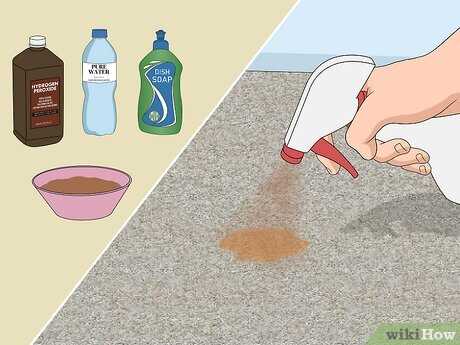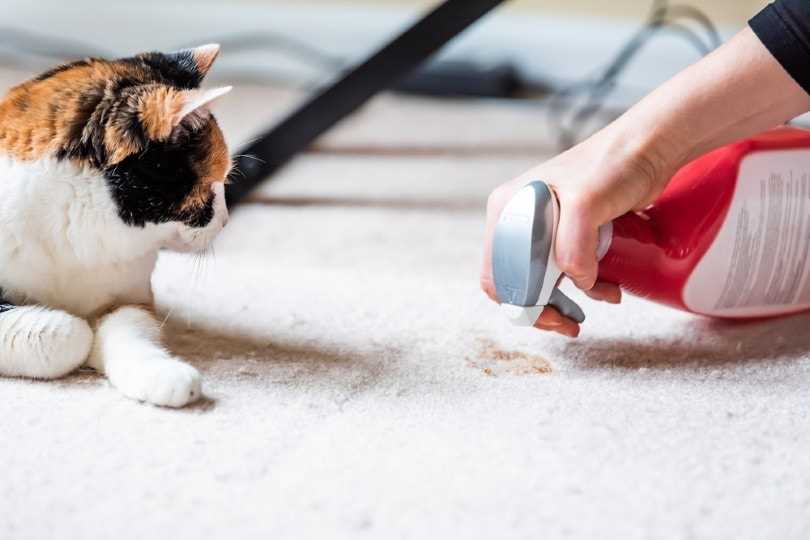



If you find yourself facing an unpleasant odor lingering in your fibers, a swift approach can restore freshness. Begin by gathering a solution of equal parts white vinegar and water in a spray bottle. Lightly mist the affected area, allowing the mixture to penetrate the fibers for about 10 minutes.
Next, blot the area with a clean cloth or paper towel to absorb the moisture and odors. Avoid rubbing, as this can push the remnants deeper into the material. After blotting, sprinkle some baking soda generously over the damp spot. This natural deodorizer will help neutralize the scent effectively.
Allow the baking soda to sit for several hours, or ideally overnight, to maximize its odor-absorbing properties. Finally, vacuum the area thoroughly to remove any residue, leaving your flooring refreshed and odor-free. Regular maintenance can prevent future occurrences, ensuring a pleasant environment for all.
Identify the Source of the Odor
First, locate the exact area where the unpleasant scent is strongest. This often involves getting close to the ground, as smells tend to linger low. Use your nose and follow the trail to pinpoint the problem spot.
Check for Residue
Inspect the fibers for any visible traces. If you see anything, clean it up immediately. Use gloves and paper towels to remove solid matter, then dispose of it properly to avoid further issues.
Use a Blacklight
A blacklight can help detect hidden remnants that aren’t visible to the naked eye. Turn off the lights and scan the floor. Areas with dried waste will glow under the UV light, allowing for targeted cleaning.
Once the source is identified, you can apply appropriate cleaning solutions to address the issue effectively. Proper identification simplifies the elimination process, ensuring a fresher environment for everyone.
Choose the Right Cleaning Solution
For tackling unpleasant odors, enzymatic cleaners are a top choice. These solutions break down organic matter, effectively neutralizing the source of the issue. Look for products specifically designed for pet waste; they contain bacteria that digest the waste material and eliminate lingering scents.
Natural Alternatives
If you prefer a DIY approach, consider mixing equal parts white vinegar and water. This simple solution helps neutralize odors without harsh chemicals. Baking soda is another effective option; sprinkle it on the affected area after cleaning, let it sit for several hours, then vacuum it up to absorb any remaining odors.
Commercial Options
When selecting store-bought options, check labels for products that state they are safe for carpets and effective against pet odors. Brands that include odor-neutralizing technology can also be beneficial. Always test a small area first to ensure it won’t damage the fibers.
Apply the Cleaning Solution Properly
First, always test the chosen cleaning product on a hidden area of the fabric to ensure it won’t cause discoloration or damage. Once confirmed, proceed with application.
Steps for Application
- Blot the affected area with a clean cloth to absorb any excess moisture.
- Apply the cleaning solution generously, ensuring it penetrates the fibers.
- Use a soft-bristle brush or cloth to gently work the solution into the material.
- Allow it to sit for the recommended time as per the product instructions.
- Rinse the area with clean water and blot to remove any residue.
Final Touches
After cleaning, it’s important to dry the area thoroughly to prevent mold or mildew. A fan or a dehumidifier can help. If odors persist, consider repeating the process or using a specialized enzymatic cleaner.
While maintaining a fresh environment, don’t forget to keep your fur healthy with the best vitamins for cats fur. Remember, cleanliness contributes to well-being! If you need heavy-duty cleaning tools, check out the best pressure washer for air conditioner for additional options.
Use Odor Neutralizers After Cleaning
After thoroughly addressing the issue, applying a quality odor neutralizer is crucial. Look for products specifically designed to eliminate unpleasant aromas rather than just mask them. Enzymatic cleaners work wonders, as they break down the odor-causing substances at a molecular level.
Applying the Neutralizer

Once the area has dried, spray or sprinkle the neutralizer generously over the cleaned spot. Ensure it penetrates deep into the fibers for maximum effectiveness. For best results, let it sit for the recommended time mentioned on the product label. This allows the formula to work effectively, breaking down any lingering residues.
Natural Alternatives
If you prefer a homemade solution, a mixture of baking soda and vinegar can be effective. After cleaning, sprinkle baking soda over the area, then lightly spray with vinegar. The reaction between the two will help neutralize any remaining odors. Allow it to dry completely before vacuuming up the residue.
Regular use of these neutralizers can prevent the return of unpleasant scents, keeping your living space fresh and inviting.
Prevent Future Incidents and Odors
Keeping my space fresh involves a few key habits. First, regular litter box maintenance is a must. Scoop it daily and change the litter weekly to minimize unwanted fragrances.
Maintain Cleanliness

Make sure to clean any accidents immediately. Use a dedicated cleaner for any spots outside the litter area. This discourages repeat offenses.
Monitor Diet and Health
A balanced diet impacts everything. Consult with my human about my meals and consider switching to high-quality food to promote better digestion and reduce unwanted odors. Regular vet check-ups help catch any health issues early.
| Tip | Description |
|---|---|
| Litter Box Maintenance | Scoop daily, change weekly. |
| Immediate Cleaning | Address accidents right away. |
| Diet Monitoring | Discuss food options with your vet. |
| Regular Vet Visits | Ensure ongoing health and wellness. |
By following these steps, my living area stays pleasant and clean, ensuring both comfort and happiness for everyone involved.









